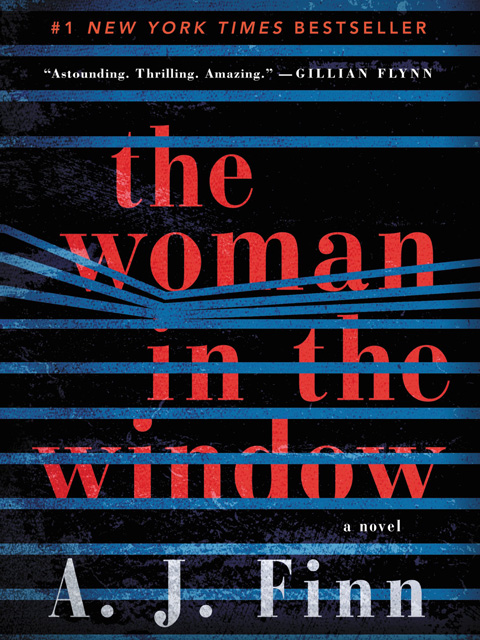Book Review: The Woman in the Window by A. J. Finn


Popular debut novels are an intriguing phenomenon, often the book equivalent of an ingénue who notches a surprising win at the Oscars every decade or so. Some are deserving—think Marlee Matlin in Children of a Lesser God—and some are, to put it nicely, puzzling (Anna Paquin in The Piano, anyone?). The Woman in the Window, the 2018 thriller by A. J. Finn that ranked seventy-fifth among overall sales for the year and third among Amazon sales of fiction, is a book that falls somewhere between the two.
The Woman in the Window is cunningly, some might say calculatingly, crafted to ride the wave of the Unreliable Female Narrator subgenre, whose popularity kicked off with Gone Girl, and then morphed into the Unreliable Drunken Female Narrator subgenre that peaked with The Girl on the Train. The central character is late-thirties (why are these crazy gals always the same age?) child psychologist Anna Fox, a smart yet self-destructive antihero who is separated from her husband and young daughter.
Anna is an agoraphobic who has been housebound for ten months; the events leading up to the development of the disorder are some of the more remarkable in the book. This might seem unbelievable at first glance, but considering how much of our lives are lived online these days, and how many services will deliver whatever we want or need straight to our doorsteps, it works. In her claustrophobic confines, Anna whiles away her time downing bottles merlot, spying on her neighbors through the windows, watching classic black-and-white suspense movies, feeling bad for herself, and falling into a drunken stupor.
Like Rachel in The Girl on the Train, Anna is a tough character to root for. She makes so many poor and unethical decisions that the reader almost can’t wait until she passes out for the night. The passages where she thinks about or relives memories with her absent husband and child are where we get some sense of her vulnerability and her wish to do better, be better. They also comprise some of the best writing in the book, like this this passage:
“She slurps again, chews. ‘Mo-om.’ This is a tug-of-war between us; she’s whittled Mommy down, against my wishes, to something blunt and stumpy. ‘Let it go,’ Ed advises—but then he’s still Daddy.”
But just as often as Finn turns a great phrase (“The central heating clears its throat, exhales”), he strings together a purple-tinged paragraph like this one:
“I grasp the faucet, duck my head beneath it, jerk the handle toward the ceiling. A whip of white water. Plunge my mouth forth, gulp deeply.”
Other parts of the text are so badly punctuated, you’ll wonder if Finn, an editor himself (real name: Dan Mallory), was tipping his own bottle of merlot when writing. And then there are several of what can only be described as WTF passages. For example:
“I’ve twisted myself in the sheets, have to peel them from my body, like apple skin. Sun is pouring through the windows, lighting up the bedclothes. My skin glows with heat. I feel oddly beautiful.”
Sure. Because what unshowered, hungover woman, upon waking in a sweaty bed and peeling the sheets from her body like sunburnt skin, doesn’t feel beautiful?
It’s clear that Finn has studied his genre, and the dozen or so classic suspense films he borrows bits of scenes and plot from, well; there are big scares and little ones, and plenty of “Hey, wait a second” moments that encourage you to give Anna some rope along her increasingly nutty journey. But Finn has taken these conventions to heart perhaps a little too well: the primary problem with The Woman in the Window is that it reads like a carefully curated collection of plot twists, character quirks, red herrings, and bumps in the night—a Hollywood summer blockbuster meant to rake in some quick bucks—and less like an idea that rose organically from the imagination of a writer concerned with the craft of storytelling.
Now that the author has been outed for making up twists and turns in his own life that are even more outlandish than those in his novel, all in order to advance his career, it’s perhaps a little harder to get sucked into the story of The Woman in the Window. But whatever your opinion of Finn/Mallory, his book is a perfectly serviceable beach or train read, even if, like those flash-in-the-pan Oscar winners, it’s not likely to stick with you for more than a few months.
Like what you’ve read? See the previous book review.
